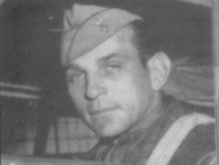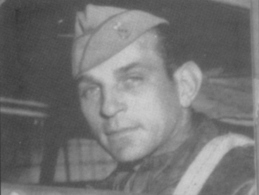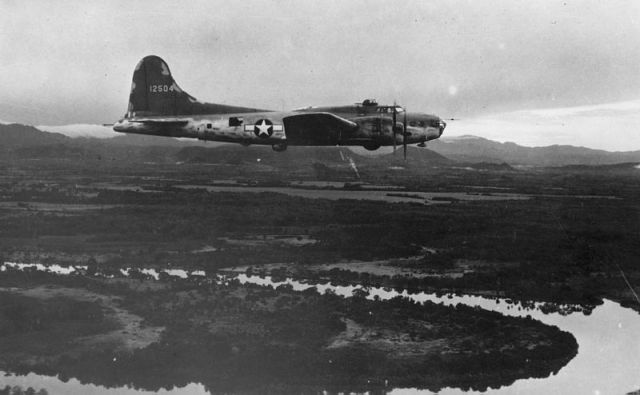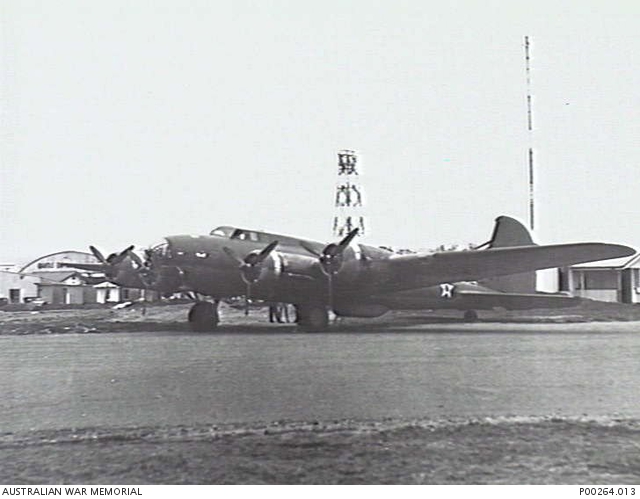
The Battle of Balikpapan – Round One to the US Navy
With the drive through Malaya toward Singapore – the western part of the Japanese pincer operation against Java –– now well underway, the eastern part of the pincer was set in motion. It was a drive down Macassar Strait, between Celebes and the east coast of Borneo, to capture the vitally important oil production centers of Tarakan and Balikpapan and to establish air bases within range of Java..

Map of Borneo with oil centers and secret KNIL airbases
At 17.00 p.m. on January 21, the light cruiser Kana, 9 destroyers and a smattering of submarine chasers, mine sweepers and patrol craft left recently captured Tarakan harbour. They were escorting 18 transports carrying the Sakaguchi Brigade’s 56th Regimental Group and the Kure 2nd Naval Landing Force, both tasked with the capture of the strategically immensely valuable Balikpapan oil production centre.
Stormy weather provided cover for the Japanese ships, but PBY’s from Patwing 10 and Dutch Navy Catalina’s found and shadowed them. And again, when this fleet was detected, it became clear that ABDACOM lacked the naval forces to prevent a Japanese invasion.
The US bomber force was the only offensive weapon directly available and 5th Bomber Command was put under immense pressure. Things really heated up and from now on, there would be no rest, neither for the veterans nor the newbie bomber crews; they had to carry out strike after strike against the menacing Japanese invasion forces.

B17’s bombing through cloud
On January 22 the first mission was carried out against the Japanese invasion fleet off Balikpapan. A mixed flight of the 7th and 19th Bomb Group took off from Singosari at 06.30 a.m. (1). They were routed through Palembang in Sumatra where they landed around 12.20 p.m..to refuel and bomb-up.
Unfortunately, Lt. Hughes overshot the field and wrecked his bomber beyond repair. The eight remaining B-17’s went on and arrived over Balikpapan several hours later. They pressed home the attack, bombing from 14.500 ft., but as the area was covered by an 8/10th cloud layer, the results of the attack were uncertain. The flight returned unharmed to Palembang and, after staying overnight, the eight B-17’s returned to Singosari, leaving Hughes and his crew behind with orders to strip everything valuable from their wrecked B-17E (41-2419).
Later that day, January 23, nine Dutch Glenn Martin B-10 bombers operating out of Samarinda II attacked the invasion fleet around 15.25 p.m. and damaged two of the transports (2).
ABDACOM had ordered US Navy light cruisers Boise and Marblehead and destroyers Parrott, Pope, John D. Ford, and Paul Jones to intercept and destroy the Japanese invasion force before it could reach Balikpapan.
But they were off to a bad start; their most powerful unit, the light cruiser Boise, almost immediately ran onto an uncharted reef in the Sape Strait and had to retire with a badly ruptured bottom. A little later, Marblehead, the other light cruiser, lost a turbine and had to slow down to a sedate 15 knots.

USS Pope under full power
Commander Paul H. Talbot decided not to tie his destroyers to the limping Marblehead and, taking the lead in his flagship John D. Ford, ordered his quartet of old four-stackers to make turns for 27 knots and set course for Balikpapan. They arrived shortly after 02.00 a.m. on January 24 and were treated to a grand spectacle. The retreating Dutch had torched and dynamited the Balikpapan oil-wells and refineries. To Talbots delight, the Japanese transports and other fleet units were sharply silhouetted against a blazing inferno that spanned the horizon.
Attacking immediately with torpedoes and guns, Talbot took his little force into the first US Navy surface action since 1898, when Dewey took his Asiatic fleet into Manila.
The sudden and totally unexpected attack caused great confusion amongst the Japanese. They initially thought they were under submarine attack and the Japanese escorts launched countless depth-charges and later even shelled each other in the wild confusion that followed.
One Japanese source describes the attack as follows:
“…between 0420 and 0500, in the middle of the [landing] operation, allied naval vessels, which were judged to be three or four destroyers and one or two cruisers, appeared out of nowhere like phantom killers, wreaked havoc in the dark, and disappeared like the wind…(3)”

July 11, 1942: Commander Paul H. Talbot receives the Navy Cross from the secretary of the Navy Frank Knox for his action off Balikpapan
In a brisk and decisive action, the old four-stacker destroyers sank 3 transports – one of them was the Kuretake-maru of 5,175 tons, transporting the 146th Infantry Regiment’s / 3rd Battalion headquarters – and badly damaged two transports and a patrol craft. (4)
The last torpedo was fired at 03.45 a.m. and produced a definite hit on a merchantman. Out of torpedoes and low on ammo and with only minor damage to Pope, the four-stackers retired at 04.00, going to max revs and 32 knots.
Alas, there were no Allied naval assets to follow up this effective action, apart from a single Dutch submarine – whose commanding officer had had a grandstand view of the action – and 4 American subs,. Erroneous information from ABDACOM had sent all Dutch fleet units on a wild-goose chase to the west of Borneo; USS Boise and Marblehead were limping back for repairs and the British were clearly too preoccupied with Singapore to even bother.
Inevitably, the task of following up the destroyer attack and doing more damage to the battered Japanese invasion fleet was handed to the overworked US bomber force and the ABDACOM order-issuing machine groaned into action.
Footnotes / References
(1) Planes/Crews imvolved: 41-2456 (Robinson), 41-2460 (Hillhouse), 41-2471 (Strother), 41-2472 (Key), 41-2406 (Hobson), 41-2419 (Hughes), 41-2454 (Skiles), 41-2468 (Northcutt), 40-3067 (Parsel)
(2) Tatsugami Maru and Nana Maru, The Nana Maru of 6,557 tons eventually sank. Tatsugami Maru made it to Balikpapan, anchoring with the rest of the invasion force.
(3) Quotation from Japanese War Study “Senshi Sōsho”, Part 3, Chapter VII, pp. 357
(4) Quotation from Japanese War Study “Senshi Sōsho”, Part 3, Chapter VII, pp. 358.
Ships sunk: Sumanoura-maru (auxiliary torpedo- and submarine-net layer and mine layer/oiler), Tatsugami-maru (munitions ship), Kuretake-maru (5,175 tons; with the 3d Battalion headquarters, the 12th Company, the 3d Machine Gun Company, and others on board): Ships badly damaged: Patrol boat No. 37, Asahisan-maru. Ships slightly damaged: Kumagawa-maru





 Soon, Major Austin A. Straubel, who had succeeded Major Robinson as CO of the 7th Bomb Group, became deeply unhappy with this and with the way his bomb group was frittered away by 5th Bomber Command. The crews (and planes) of the 7th were – in his view haphazardly – ‘tacked on’ to the formations of the 19th. Another problem was the great difference in operational doctrine between the 7th and the 19th, as well as the difference in the mentality between the groups.
Soon, Major Austin A. Straubel, who had succeeded Major Robinson as CO of the 7th Bomb Group, became deeply unhappy with this and with the way his bomb group was frittered away by 5th Bomber Command. The crews (and planes) of the 7th were – in his view haphazardly – ‘tacked on’ to the formations of the 19th. Another problem was the great difference in operational doctrine between the 7th and the 19th, as well as the difference in the mentality between the groups.













 The downside of this scheme was that a mission would mean a 1,500-mile flight in each direction, over strongly held Japanese areas and through an unpredictable equatorial front.
The downside of this scheme was that a mission would mean a 1,500-mile flight in each direction, over strongly held Japanese areas and through an unpredictable equatorial front. His orders for the outward leg were to bomb Japanese shipping around Jolo. (1) Three of the bombers had to turn back with engine problems (2), but the remaining six fought their way north through severe thunderstorms.
His orders for the outward leg were to bomb Japanese shipping around Jolo. (1) Three of the bombers had to turn back with engine problems (2), but the remaining six fought their way north through severe thunderstorms.






